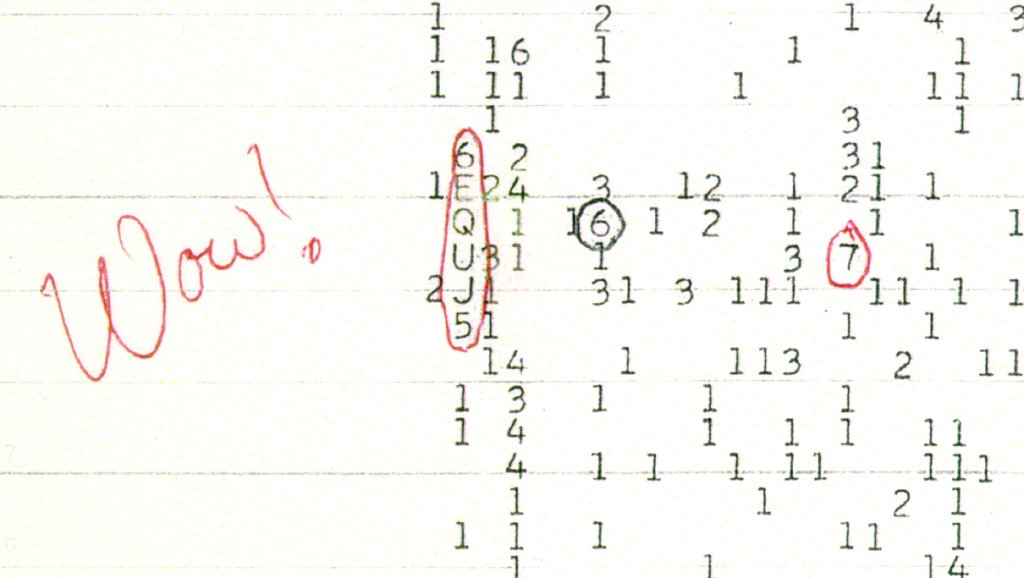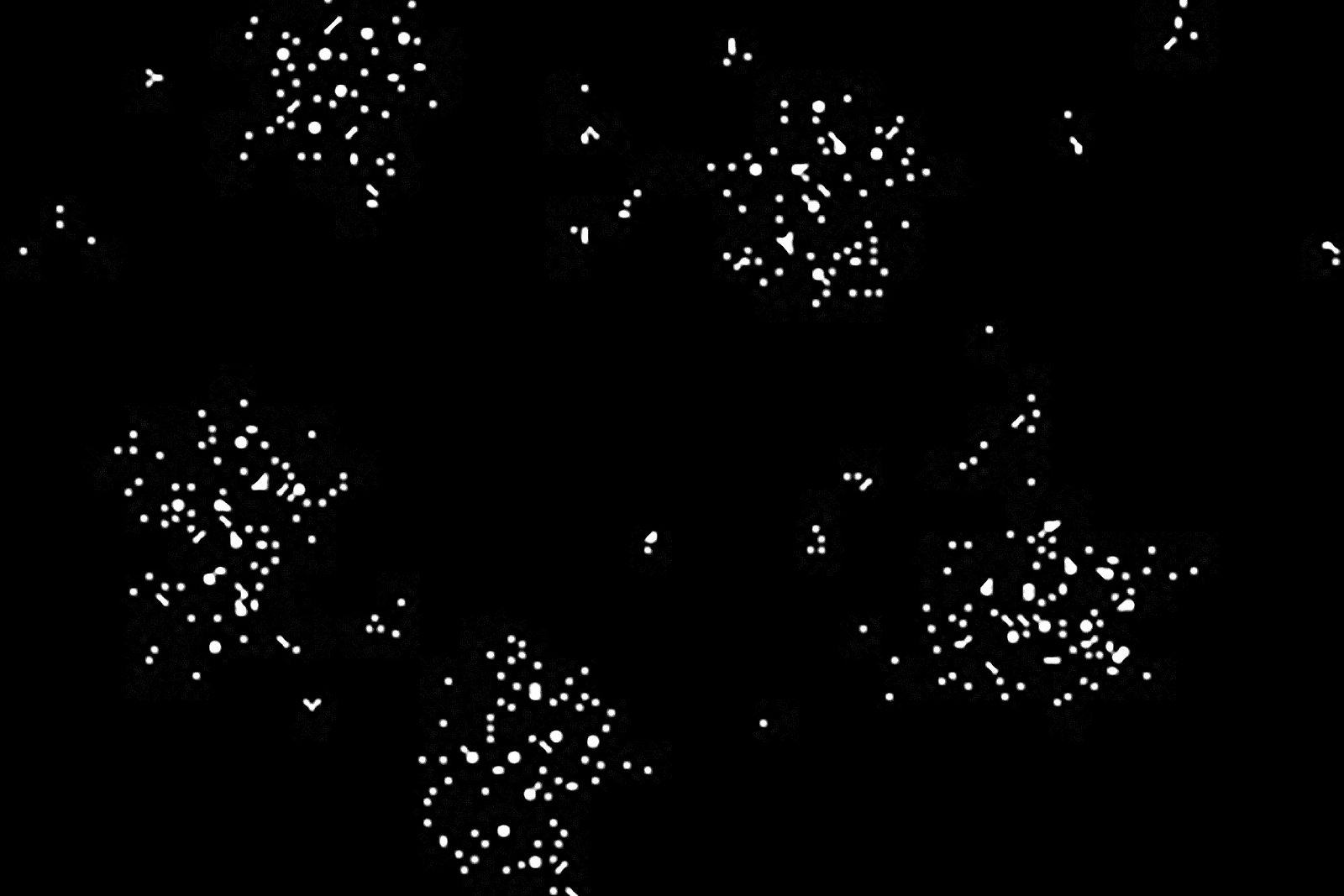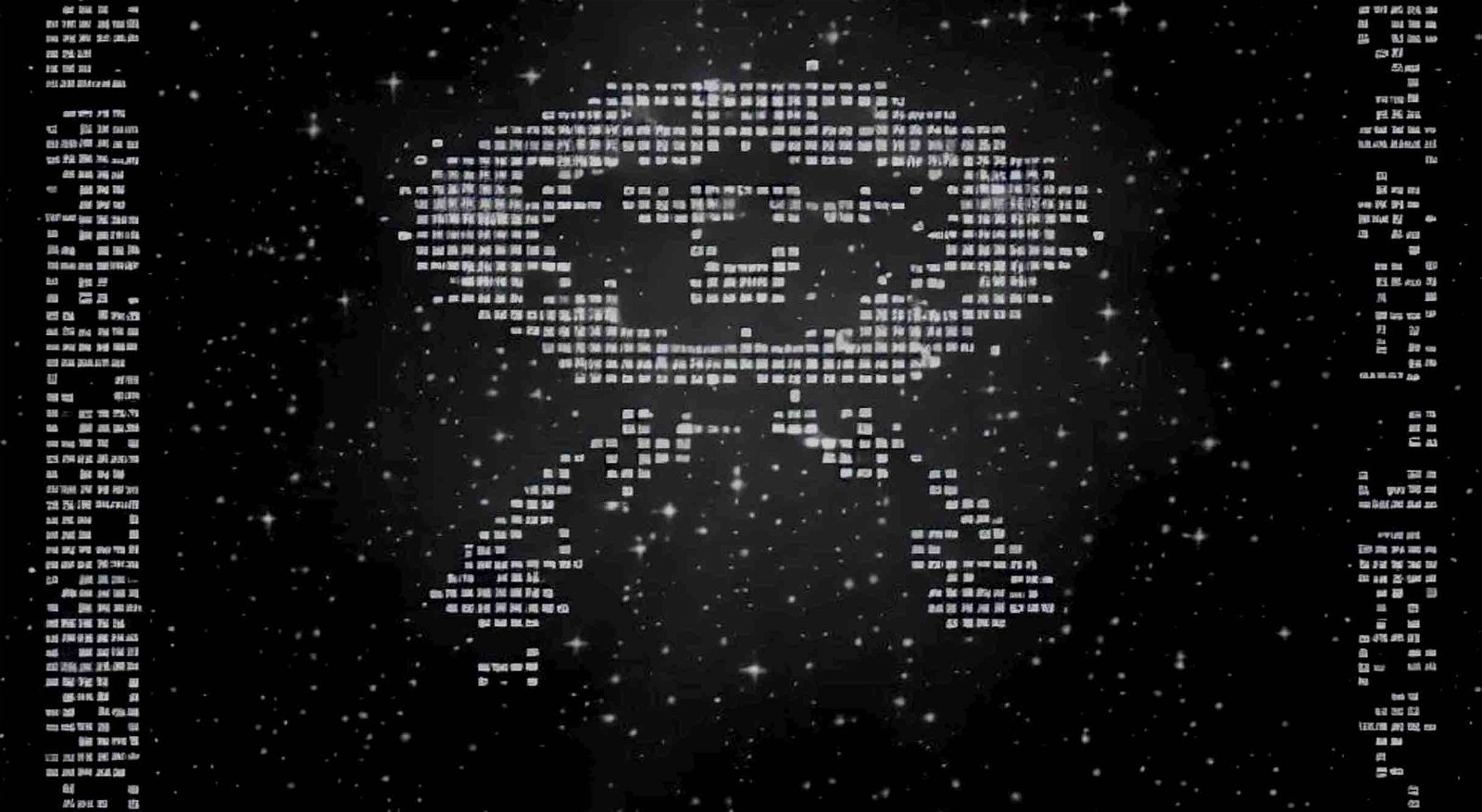Picture this: you are an astronomer working the night shift at the observatory, where scientists scour the heavens for celestial wonders and potential signs of intelligent life from afar. Tonight, however, rather than peering through telescopes, you have prepared for a long evening spent pouring over data sets from various projects happening around the facility.
You step over to visit the observatory’s director, your friend John Kraus, in the office beside you to see how his night is going. John is reading a new paper about telescope design, and beside him is a pile of books scattered across the floor covering radio astronomy and antenna theory.
You glance at your wristwatch, and it’s getting close to midnight.
You walk down the dark hallway to make yourself a strong cup of coffee because you know you’ll be here for the long haul. Somebody has to get through all this data; it won’t sort itself.
As you start to pour your coffee, a tiny beeping indicator echoes in the distance. You think nothing of it at first, but suddenly, it is followed by a sound that catches your attention: one indicating a radio transmission 30 times louder than ambient sound. Your cup of coffee is left steaming on the counter as you bolt back down the hall to your desk.
You can’t believe what you’re hearing and seeing. The transmission lasts for over 72 seconds. Looking over at your data chart, you then wipe your eyes to make sure what you’re seeing is right.
Could this really be what it looks like?
You double-check all the information on the printout in front of you and confirm the narrowband radio transmission you’re hearing is being broadcast at 1,420 megahertz. Excitedly, you circle a portion of the code, a vertical orientation of letters and numbers that reads “6EQUJ5”, and write “WOW!” in the margin: it is the precise spot where your fellow scientists have predicted that a message from an alien civilization, if one were to exist, would likely be found.


This, or something close to it, is how the events might have unfolded for you on the night of August 15, 1977, at 11:16 p.m., if you had been working the Big Ear radio telescope at Ohio State University Radio Observatory. For it was under circumstances like these that astronomer Jerry R. Ehman discovered what has since been remembered, appropriately enough, as the WOW! Signal.
Originating from the direction of Sagittarius, the famous signal seemed to possess the characteristics scientists would expect from a genuine signal from an intelligent alien civilization. However, the actual source of the signal remains undetermined, and scientists remain divided on whether it had been something mundane or if it might have actually been an alien message.
Regardless of its source, the Wow! Signal became highly influential in terms of galvanizing the search for extraterrestrial intelligence (SETI). It inspired many to wonder what would happen if humans ever did receive a clear, unambiguous message from an extraterrestrial civilization.
Now, the idea of how and when we may receive alien messages from the stars has also served as part of the inspiration behind an innovative new SETI-themed artistic effort geared toward educating the public about some of the opportunities and challenges communication with extraterrestrials might present.
A Sign in Space
Daniela de Paulis, an interdisciplinary artist and licensed radio operator presently holding the title of Artist in Residence at both the SETI Institute and the Green Bank Observatory, has assembled a diverse team of experts from around the world that includes SETI researchers, space scientists, and artists, all collaborating on her most recent artistic venture, A Sign in Space.


An innovative global theatre presentation, Paulis’s project aims to showcase how receiving, decoding, and interpreting an extraterrestrial message would work through the involvement of the worldwide SETI community. Drawing on professionals from various fields, as well as the general public, the project requires international collaboration to foster communication, including SETI space research, societies, and cultures from multiple disciplines.
“I presented this proposal to some scientists I’ve met through the SETI committee, and they reacted very positively. From a small core group of people, including myself and these scientists, we had the opportunity to talk with the European Space Agency.”
“The European Space Agency loved the proposal so much that they suggested using one of their spacecraft for this project,” adds de Paulis. The result was that on May 24, 2023, at 19:00 UTC / 12:00 pm PDT, the European Space Agency’s ExoMars Trace Gas Orbiter sent an encoded message to Earth from its position in orbit around Mars, simulating a signal from a form of extraterrestrial intelligence.
Decoding a Cosmic Cryptogram
Three prominent radio astronomy observatories situated worldwide detected this encoded message, including the SETI Institute’s Allen Telescope Array, the Robert C. Byrd Green Bank Telescope at the Green Bank Observatory, and the Medicina Radio Astronomical Station observatory managed by the Italian National Institute for Astrophysics.
The precise content of the encoded message, developed by de Paulis and her team, remained a secret until the release date, allowing the public to contribute to its decoding and interpretation in a live Discord channel open to the public 24-7.
To encourage public involvement, a live social media event was organized by the SETI Institute, featuring interviews with crucial team members that included scientists, engineers, and artists, all of whom participated from different parts of the world.
After the signal was transmitted to Earth, it was made available to the public for decoding. Meanwhile, the A Sign in Space team followed up by hosting a series of Zoom panel discussions made available to the public, which focused on topics that explore the societal implications of detecting a signal from an extraterrestrial civilization.


A Coded Message, Unsolved
As of now, the message has still not been decoded, and de Paulis and her team are unsure if ever will ever be.
“Some of us thought, okay, this is going to take two weeks. Other people said, Oh, this is not going to be decoded ever. So we simply have no idea,” de Paulis told The Debrief.
“It could be months. It could be years.”
If it remains unsolved, de Paulis hasn’t decided when the message will be revealed. However, she admits that she has considered not sharing the decoded version at all, an outcome that could also exist in real-life scenarios if an ET civilization does contact us.
“For me and my team, it’s really important not to give any spoilers because we want to really give the sense that, if we ever received an extraterrestrial message, we would have no one to ask, for help,” de Paulis says.
No one to ask for help, of course, except for each other.
“People now understood that it might be better to work with each other because the skills of one person would add to the skills of another person. And in general, there is, I would say, more self-reflection,” adds de Paulis.
One major takeaway for de Paulis has been watching the limitations that humans place on themselves, particularly as she observes the community Discord chat trying to decode the message.
“Knowing, of course, the content of the message, it’s really interesting to see how biased the human mind can be,” de Paulis told The Debrief, “and how we very quickly narrow down the options to something that we deem safer.”
“This dynamic seems to be really recurrent,” de Paulis says.
Regardless of how or when it occurs, receiving a clear and obvious message from an extraterrestrial civilization would be a profoundly transformational experience for all humankind.
However, for de Paulis and her team, what A Sign in Space has helped reveal is that before we can understand and potentially communicate with other intelligent forms of life in the cosmos, humanity must first consider how we can improve the ways we communicate with each other.
“We know how great we are, but also there are so many limitations, like exactly communicating with each other,” de Paulis explains. “Even solving human problems that, from the external side, seem to be solvable.”
You can learn more about A Sign in Space at the project’s official website, where members of the public are invited to submit their own interpretations of the coded message and its meaning.
Chrissy Newton is a PR professional and founder of VOCAB Communications. She hosts the Rebelliously Curious podcast, which can be found on The Debrief’s YouTube Channel. Follow her on X: @ChrissyNewton Or chrissynewton.com.

